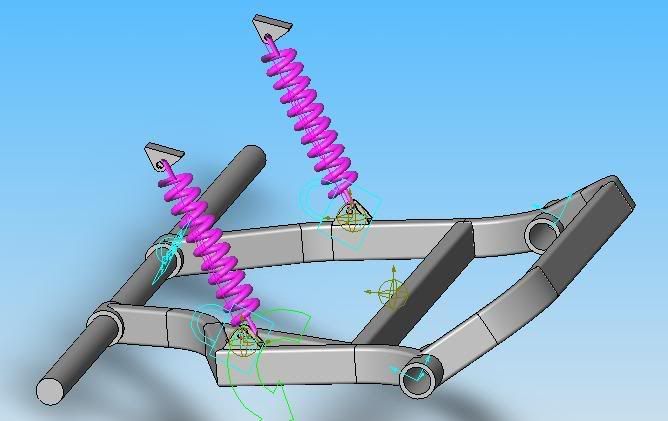PRuggiero
Mechanical
- Oct 8, 2007
- 64
hello,
I am working on doing this analysis of a swing arm, which is the rear suspension of a vehicle shown below. I am trying to simulate a worst case scenerio for a FEA which would be the vehicle falling and landing on just the rear wheels.
Im not quite sure how to calculate the loads that it will see, but I put the assembly in Solidworks Motion works and applied a rotational acceleration to see what the loads would be where the shock/damper attach.
What I don't are how to calculate what acceleration the swing arm would see in the above scenerio, and after I have the forces from the shock/damper at the swingarm, should I place the swingarm in an FEA constrain the rear where the wheels would be and apply the forces from Motion Works? Any info is appreciated.

Thanks,
Peter Ruggiero
I am working on doing this analysis of a swing arm, which is the rear suspension of a vehicle shown below. I am trying to simulate a worst case scenerio for a FEA which would be the vehicle falling and landing on just the rear wheels.
Im not quite sure how to calculate the loads that it will see, but I put the assembly in Solidworks Motion works and applied a rotational acceleration to see what the loads would be where the shock/damper attach.
What I don't are how to calculate what acceleration the swing arm would see in the above scenerio, and after I have the forces from the shock/damper at the swingarm, should I place the swingarm in an FEA constrain the rear where the wheels would be and apply the forces from Motion Works? Any info is appreciated.

Thanks,
Peter Ruggiero
